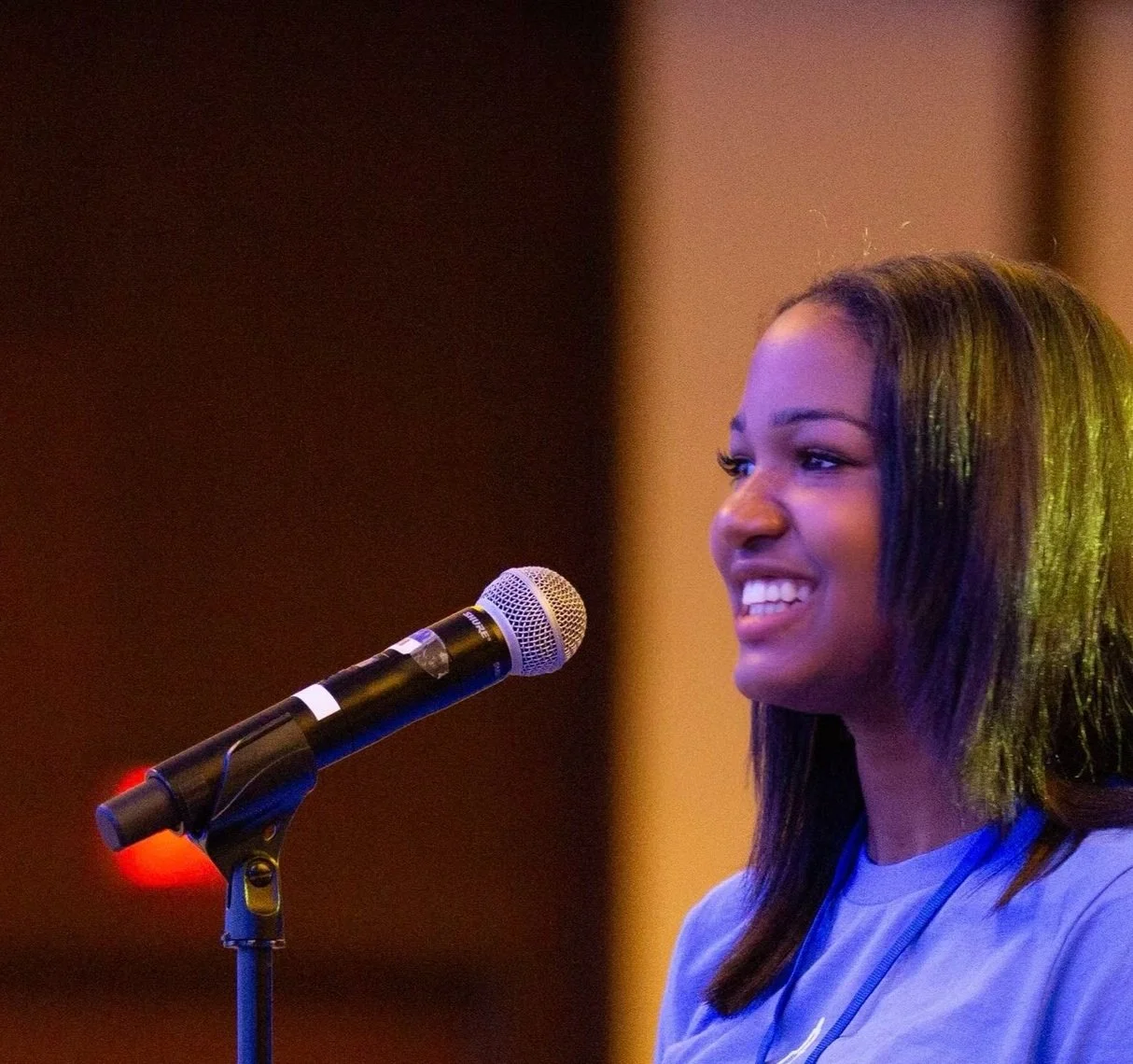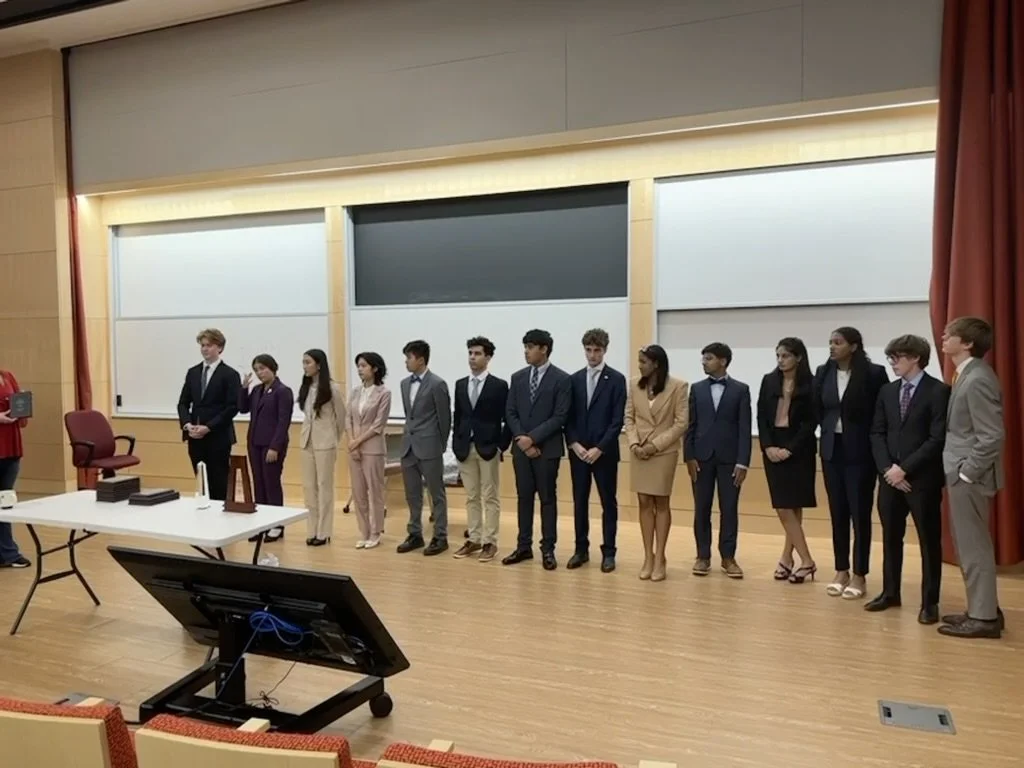Find the reason your piece exists and what your supporting.
THE EXPERIENCE BLOG
What Debate Means to Me
As the other students rushed excitedly to the cafeteria, I ducked under the hallway traffic, sprinting towards the counseling office or my art classroom in an attempt to not be seen. I popped open my computer and delved into HeinOnline and LexisNexis to research my thirty-topic docket and began to draft my speeches. On days I wasn’t prepping, I laid out on the floor with my Crayola markers, meticulously crafting anonymous posters showcasing the “new and improving” debate team (emphasis on improving), then staying late after school to deck the halls with the paper announcements. Debate was my refuge–my escape from the cruel battlefield of mean girls.
When I landed at a K-12 international school as the only new girl in my junior class, my unexpected presence and language barrier led to widespread exclusion. Their actions towards me left my happiness as predictable as a coin toss–contingent on whether someone had even acknowledged my presence. But their words pushed me to become a master of mine.
“Popularity” became defined by how consistently I practiced, how hard I worked, and how well I could mirror the persona of a confident, influential member of Congress. No one cared who I was, what I wore, or how much money I had when I stepped into a debate round. As soon as the clock started, I was promised three full minutes of respected speaking time, where I would be listened to and heard. Oddly enough, sequestering myself in debate led me to blossom everywhere else on campus despite the comments and actions of others. With my newfound confidence, I tumbled through the stands as a proud varsity cheerleader, chanting, “Go Big Green, Let’s Go!” I presented in front of the lower school classes, instructing them on how to deliver congressional-style speeches using silly gummy bear models to reenact a congress round. Everywhere I went, I spread the gospel of the confidence that comes with debate. By the end of my junior year, I grew the debate team from a ragtag group of five to a thriving family of twenty-three.
Above all, debate opened the door to an unforgettable destination: Georgetown University. After my third day debating on the Hilltop as a member of the Georgetown Policy Debate Program, I sat in my dorm room, tears falling down my swollen lymph nodes, unable to focus on the case in front of me. All of a sudden, a knock on the door brought me Saltine crackers and my favorite yellow Gatorade. I had only known the Georgetown Residential Assistants for three days, and already they showed me more kindness than any of my peers had in two years. Every person at Georgetown, whether a teacher or student, was not only brilliant and innovative but also inclusive, supportive, and eager to share their knowledge. Debating in the Georgetown community opened my heart, revealing a depth of emotion beyond ambition or accomplishment. Georgetown showed me that my future could include a world where my voice matters before and after the clock starts.
Flor
When this painting is sold a portion of the proceeds will go to the National Speech and Debate Association, learn more about them at https://www.speechanddebate.org/
Breakthrough T1D’s Impact to Me
Most children are asked to share crayons, pretzels, or stickers. I, however, was asked to share insulin. The 12:10 bell blared signifying my classmates’ lunch time and signifying my time to “shoot up.” I grabbed Alex and we made our way to the nurse. Alex was my Diabestie–defined as a best friend who also has Type 1 Diabetes. Every day, I came to school strapped with two water bottles to combat our HIGH blood sugars. Every day, she’d come to school strapped with a bag of Skittles to lay fire to our LOW blood sugars.
Most children are asked to share crayons, pretzels, or stickers. I, however, was asked to share insulin. The 12:10 bell blared signifying my classmates’ lunch time and signifying my time to “shoot up.” I grabbed Alex and we made our way to the nurse. Alex was my Diabestie–defined as a best friend who also has Type 1 Diabetes. Every day, I came to school strapped with two water bottles to combat our HIGH blood sugars. Every day, she’d come to school strapped with a bag of Skittles to lay fire to our LOW blood sugars.
On the 12th of February, I recorded a third tally in my orange bullet journal. This tally marked her absence and the fact that I was going on three days without Skittles. By five tally marks, Friday, I resorted to the M&M’s left over from Halloween and began to panic. By six tally marks, Monday, my panic was put to a pause. The intercom crackled. A tremor in the principal’s voice as she spoke, each word more haunting than the last. My vision blackened as I stood in the main hall and felt my body turn cold, slowly sliding to the ground, powerless to move and yet powerless to stand upright. My diabestie is gone. I shared my insulin due to love, while she asked for insulin due to lack (it was either my insulin or forcing her sugars above 400 to get free insulin from the emergency room).
By tenth grade, I had amassed 1,811 tally marks. When a child dies, the question is always: Who’s responsible? Yet, in this case, the answer was not a who, but a what. There existed no one to be condemned in our courts because the killer of Alex was The Hatch-Waxman Act. The world had allowed a piece of paper to shatter 1.3 million lives and counting. However, I wasn’t the world; I was Layla, and I wouldn’t allow one more life to be destroyed.
At 3:33 A.M., I sat illuminated by a solitary dim light overhead, searching organizations and companies that advocated for anything related to diabetes. I sent fifty-three emails over the course of four days. I took out my heart, showed how it was bleeding, and begged them to suture it up…no one responded. After a month and three days, I got my first and only response from the Juvenile Diabetes Research Foundation. They directed me and my resume to their Children’s Congress. If accepted, I could have a chance to stand on Capitol Hill face to face with senators and advocate for a new piece of paper, one that would have saved Alex: The Affordable Insulin Now Act. As I sealed the envelope with my application, tears welled up in my eyes. I attached a photograph of Alex and me to my application–one of the last tangible memories of us together.
After two months, I walked to the mailbox and my body began to shake as I read the words, “We are pleased to inform you…” The next day, I began mailing handwritten letters to United States senators requesting to meet. I spent weeks in preparation highlighting thousands of sheets of paper, annotating legislation, and making quizlets of the statistics: 382 million people…expected to reach 592 million by 2035…affects 1 in 400 children. The numbers danced in my head, and my drive chased them.
On July 10th, I arrived on Capitol Hill, palms drenched as I gripped my legal pad. I had dreamt my way up so far, but now that it was a reality, my body froze in fear. I slid my headphones out of my bag and played my hype song: “Suavemente” by Elvis Crespo. Feeling the beat in my footsteps and Alex’s photo in my pocket, my confidence reappeared–I knew I had an impeccable case. I boogied my way up the 365 steps, and as I walked into the United States Capitol Building, I stopped for a second, looked down at my gigantic briefcase full of research, and dropped it. I shouted, “Mom, will you grab this? I won’t be needing it.” She looked at me with panicked eyes, asking why I, the #4 debater in Texas, would ever walk into a meeting with no prep. I just ran and hugged her.
A statistic never changed the world. Every single member of Congress can find those same numbers on Google.com, but what they can’t find is this: the face of a beautiful girl gone too soon. I pulled out the photo of Alex and I and handed it to Senator Ted Cruz. “This is Alex, one of the millions shot by the gun that is insulin price gouging, and I’m the girl she passed her Skittles to. I, we, could really use your help.”
Effective January 1, 2023, out-of-pocket costs for insulin under Medicare Part D were capped. Effective July 1, 2023, out-of-pocket costs for insulin under Medicare Part B were capped. We had done it–all five representatives JDRF and I had spoken with supported the life-saving legislation. That night, I drew my final tally mark in my orange bullet journal and popped a Skittle, knowing I had just slayed an invisible monster.
Blue Thoughts
When this painting is sold a portion of the proceeds will go to Breakthrough T1D, formerly JDRF learn more about them at https://www.breakthrought1d.org/


















